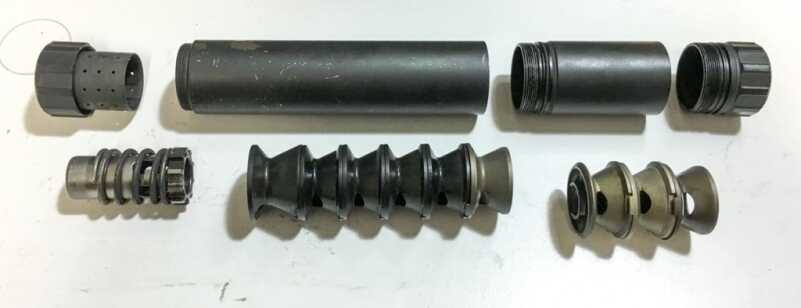
The “M” in AAC’s Ti-Rant 45M stands for “modular”
As new silencers are hitting the market all the time, it’s hard to tell which is the quietest. I’ll bet a ham sandwich that the AAC Ti-Rant 45M is up near the top of the list.
Our friends at Silencer Shop sent me an evaluation sample to run through the ringer. While there are a number of standout features, which we’ll get to in a minute, the first thing you’ll notice is that it’s quiet. I mean really, really quiet.
The .45 ACP cartridge is a great round for suppression anyway as it’s almost always subsonic right out of the box. It’s also a low pressure round, usually running somewhere between 10,000 and 16,000 pounds per square inch of pressure. To put that in perspective, the .40 S&W measures somewhere between 20,000 and 34,000 psi depending on the load. Most factory loads will be in the high 20s and low to mid 30s. Less pressure equals less blast, and therefore, less noise that needs to be suppressed. But enough about that, let’s take a closer look at the TiRant 45M.
A quick tour of the AAC Ti-Rant 45M
First of all, the “M” in the name is significant. It stands for “modular.” Advanced Armament Corporation (AAC) makes three different Ti-Rant models in both 9mm and .45 ACP. The standard Ti-Rant is a fixed length pistol suppressor. The “S” model is a short configuration that offers more portability but less noise reduction. The “M” model gives you the best of both worlds.
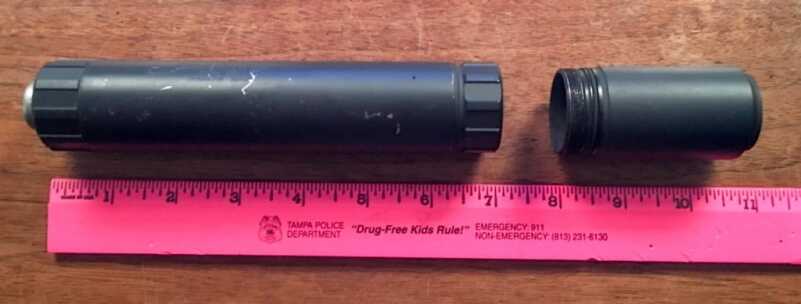
You can use this Ti-Rant in the short (about 7″) or long (about 9″) configurations.
The 45M model has a two part tube body. The end that mounts to the pistol is like the “S” version tube. The tube body extension and extra baffles add to the length, offering full-size silencer performance. Inside, there are two separate baffle stacks, one that lives in the longer tube and another that goes in the extension. More length plus more baffles equal more quiet, but at the cost of a longer overall size.
Let’s take a look at a spec comparison between the three models.
| Model | Ti-Rant 45 | Ti-Rant 45S | Ti-Rant 45M |
| Length | 8.74” | 6.42” | 9” (long configuration) 7” (short configuration) |
| Diameter | 1.38” | 1.38” | 1.38” |
| Weight | 11.5 oz | 9.2 oz | 13 oz (long)11.3 oz (short) |
| Sound Reduction (Dry / Wet) | -30db / -41db | -18db / -28.5db | -33db / -41db (long)-21db / -28db (short) |
Interestingly, the modular version outperforms the standard and short models in its respective configurations with improved sound reduction.
The main body of the Ti-Rant is made from Grade 9 Titanium while the front extension tube is made from 7075-T6 aluminum. The idea is to have durability closer to the muzzle where the gas is most abusive and weight savings further down the tube.
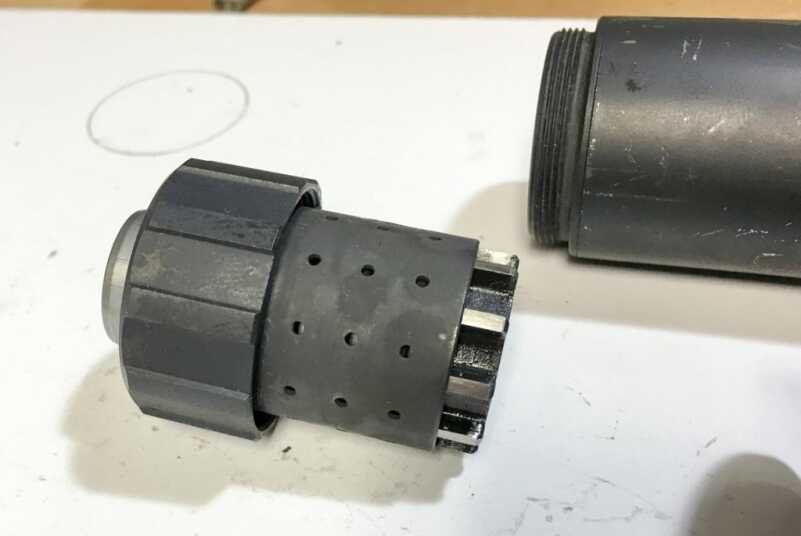
The booster housing and direct thread mount with booster installed.
The tube has four main components: the mount and booster housing, the main tube, the extension tube, and the muzzle cap. The suppressor housing has the direct thread mount and uses a standard AAC booster pistol. This means that you can buy the 45M suppressor and a 9mm and .40 pistol and shoot the same suppressor on the smaller calibers just by changing the piston. While we’re talking about changing things around, I should note that you can do everything by hand – no tools are required. On the muzzle end, the cap is designed to fit to either the end of the extension tube or the end of the main tube. This is what completes both the long and short configurations.
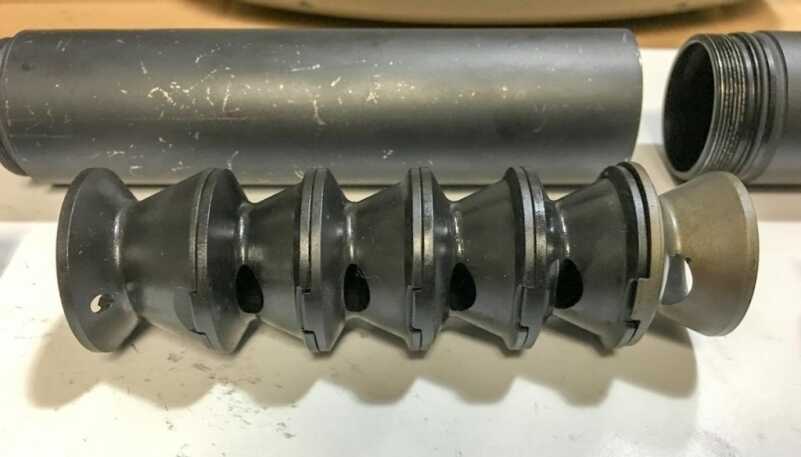
Here’s the main baffle stack. The one on the left is the stainless steel one that takes most of the abuse.
Inside the tube are a metric boat load of individual baffles. At a glance, they look similar, but on closer examination, you’ll see that they have slightly different shapes and functions. One, and only one, is shaped to be the first and it’s made from stainless steel to deal with the harshest portion of the muzzle blast. After that, a series of interlocking steel baffles build out the stack. At the end of the short tube, there is an end baffle that has a smooth ring to interface with either the end cap (short configuration) or the base of the first baffle in the extension tube. As you might guess, and can see in the pictures here, three additional baffles are made to fit into the extension tube.
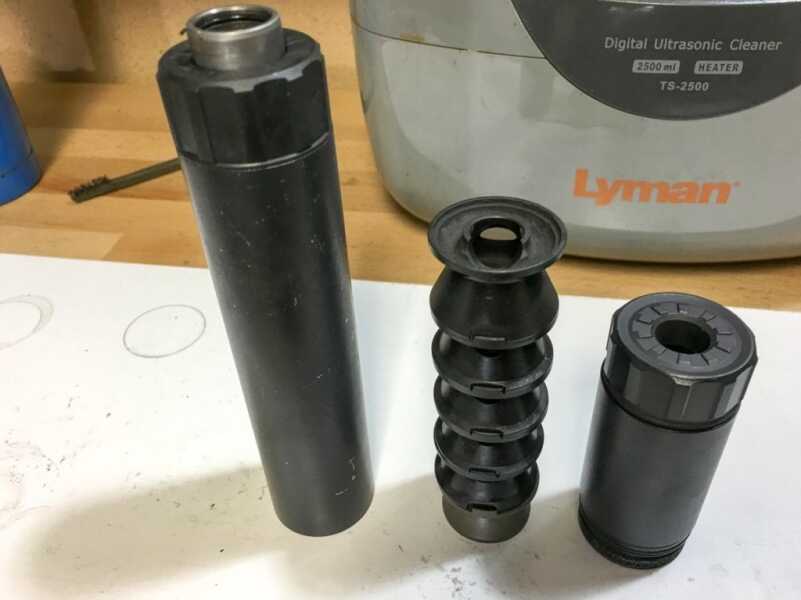
The easiest way to put the Ti-Rant back together is to stack the baffles and lower the body onto them.
The easy way to put this kit back together is to stack your baffles in the correct order vertically. Then carefully lower the tube body onto the stack. Do the same for the extension tube and baffles. Last, for the full-length setup, screw the two tubes together after the baffles are placed inside of each section.
The short configuration is easy too. Once the baffles are in the main tube, remove the end cap from the extension tube and screw it onto the main tube. The top baffle in that stack is already shaped to fit perfectly into the end cap.
Sound confusing? It’s not really once you get the parts on a table and can see how they fit together. Check out the pictures here to get an idea of how it all fits together.
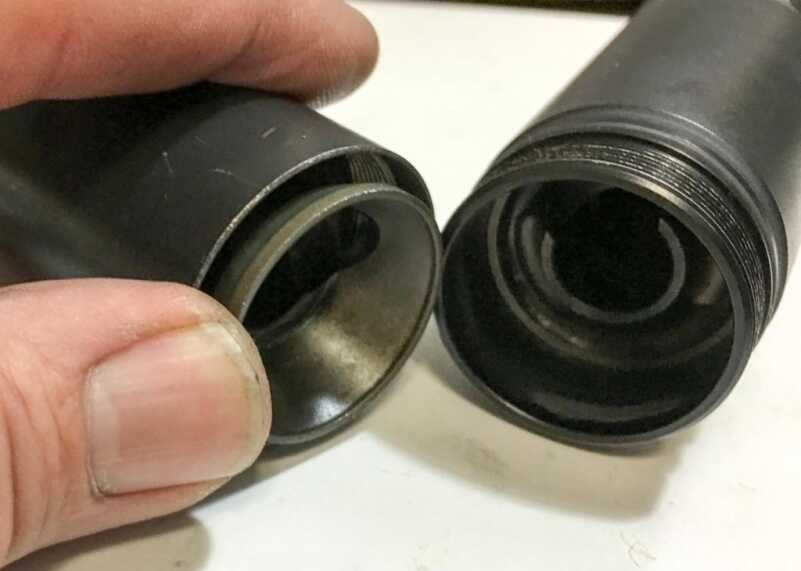
Once the baffles are inserted into the main and extension tubes, just screw the two units together.
Shooting the Modular Ti-Rant 45
For ammo, I chose American Eagle’s .45 Suppressor loads. This is a new product on the market that’s made specifically for silencer use. Of course, it works just fine unsuppressed too, it’s just got a couple of features like cleaner burning powder to help minimize suppressor fouling and tweaked velocity for ultra-quiet performance. The load is a 230-grain full metal jacket bullet that’s rated at 840 feet per second when measured at the muzzle. I measured velocity from the Smith & Wesson M&P 45 without a suppressor attached at 792.4 feet per second.
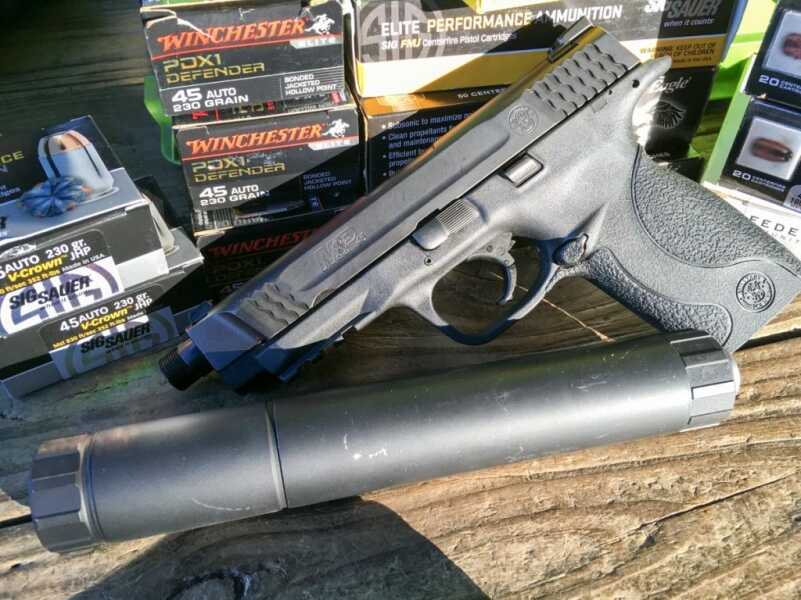
I used the Ti-Rant 45M with a Smith & Wesson M&P 45 Threaded Kit.
For the host gun, I used one of the new Smith & Wesson M&P 45 Threaded Kit models. These guns come from the factory with both standard and threaded barrels in the box. When you’re not using a suppressor, pop in the standard barrel for a slightly shorter pistol and no worries about an exposed thread protector cap than can work loose.
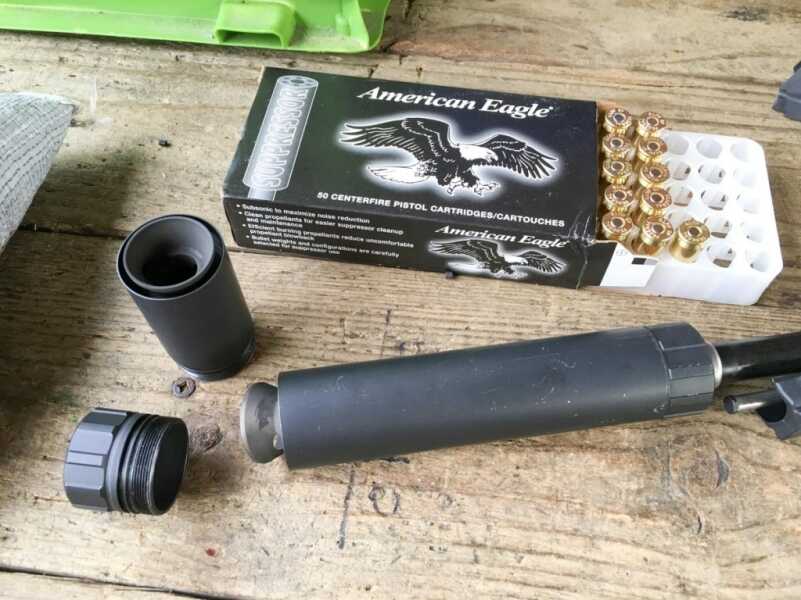
I tested the Ti-Rant with American Eagle’s new 45 Suppressor ammo. Good stuff – and it’s affordable.
The results? This is one quiet suppressor. To get an comparative idea, I shot it side by side against a SilencerCo Osprey 45 suppressor from the same gun, also using the American Eagle 45 Suppressor ammo. In the full-length configuration, the Ti-Rant 45M was noticeably quieter than the SilencerCo Osprey 45. Obviously those are subjective measures as I was going by ear and judging “noise” which is a pretty sophisticated science. While I was at it, I reconfigured the Ti-Rant to the short configuration. In this case, the Osprey 45 sounded quieter to me, which is what I would have expected.
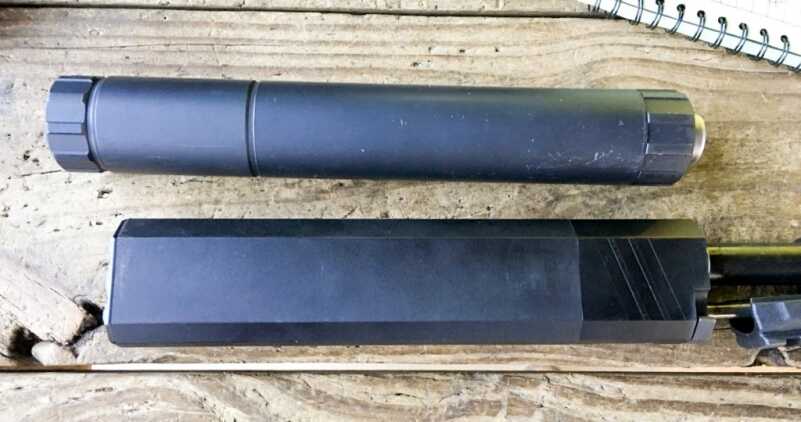
Here I have a SilencerCo Osprey 45 (bottom) shown for size comparison to the Ti-Rant 45M (top)
While absolute sound depends on the pistol and specific ammo, AAC publishes estimated sound levels of 132db in the full-length configuration and 124db when you add five ccs of liquid. In the short setup, the raw sound levels are 144db (dry) and 137db when wet.
I got a bug up my butt to try one more thing, just for fun. I usually observe that adding a suppressor increased muzzle velocity a bit, so while I had all my gear at the range, I re-measured average velocity from the Smith & Wesson M&P 45 with the full-length Ti-Rant attached, again using the same American Eagle 45 Suppressor ammo. With the Ti-Rant screwed on, the average velocity increased from 792.4 fps (unsuppressed) to 841.3 fps (suppressed).
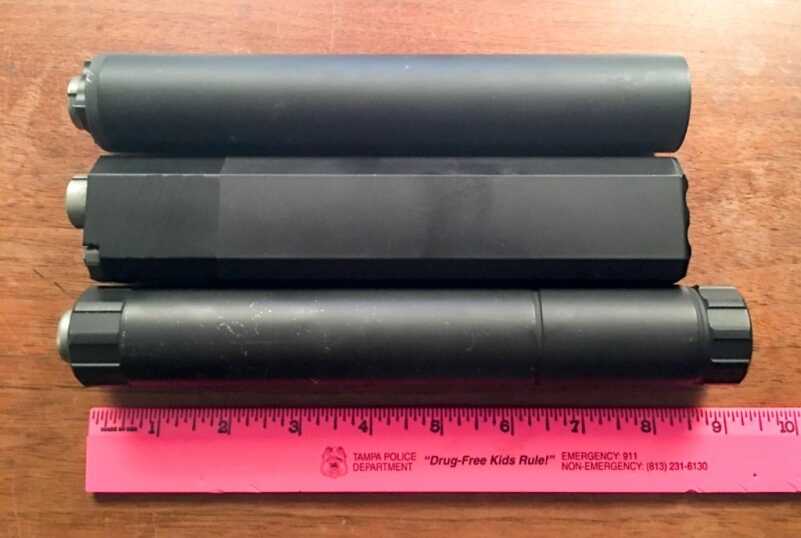
Another size comparison: SilencerCo / SWR Octane 45 (top), SilencerCo Osprey 45 (center) and AAC Ti-Rant 45M (bottom)
Closing thoughts
On paper, versatility and the ability to reconfigure can be a great thing. In reality, that’s not always the case. However, with the Ti-Rant, the Lego approach is implemented exceptionally well. Through a lot of shooting, I had no trouble with the main and extension tubes staying tightly connected. Better yet, when I was done, I had no trouble at all separating them by hand.
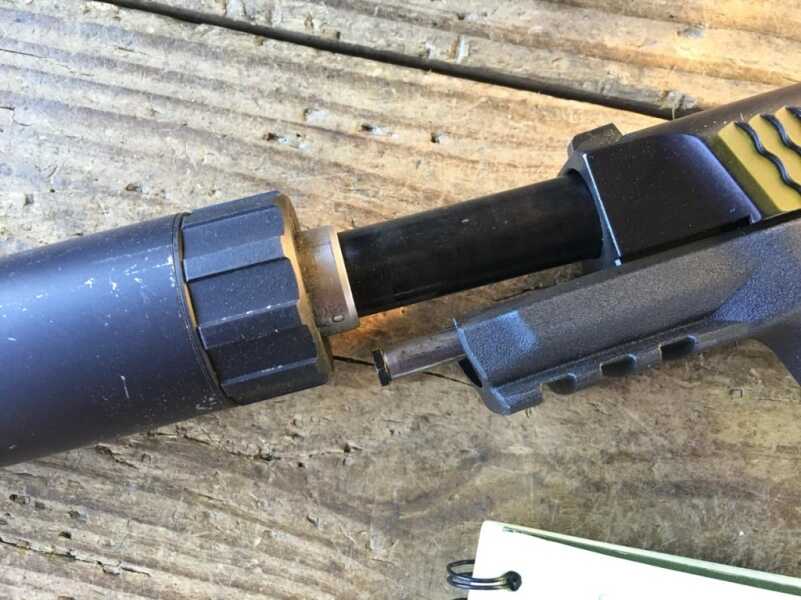
One of the things I really like about the Ti-Rant is the large surfaces for assembly and disassembly. That really helps as you can get a good drip on the various components.
Also, the thread mount and blast chamber have large surfaces to grab for disassembling and reassembling the silencer body. So does the end cap. After you’ve worked with a number of silencers, you’ll grow to appreciate little details like this. Silencers get dirty and nasty when you shoot them, and if they’re too “elegant” and designed for looks instead of function, they can be frustrating. This one is not. I never had to break out a strap wrench or any other tool to disassemble the Ti-Rant after heavy shooting sessions. That’s a huge plus.
Considering you get two different suppressors (in a sense) the $849.99 MSRP is reasonable. This is a well-made silencer, and you’ll hear the difference, even with the naked ear.

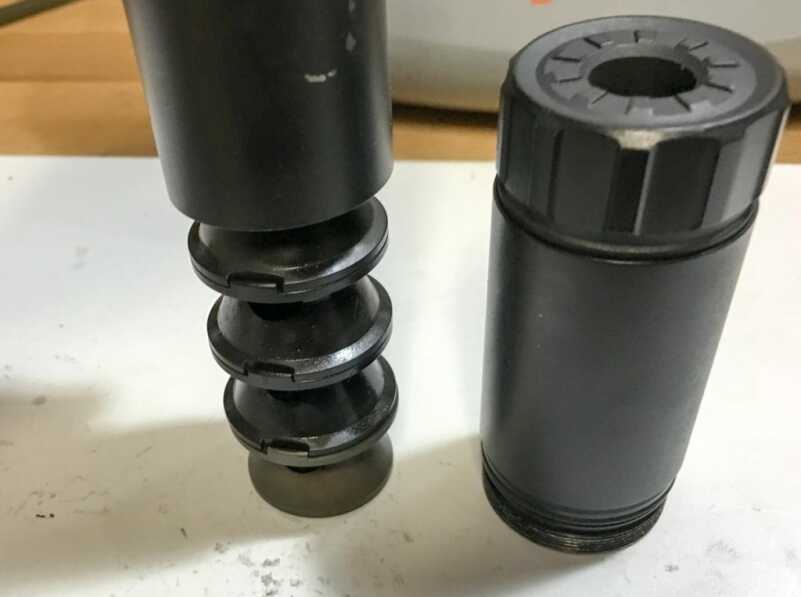
Please what’s the best one for
Cz75Sp- – 9mm
And
Glock19 – 9mm
Very best